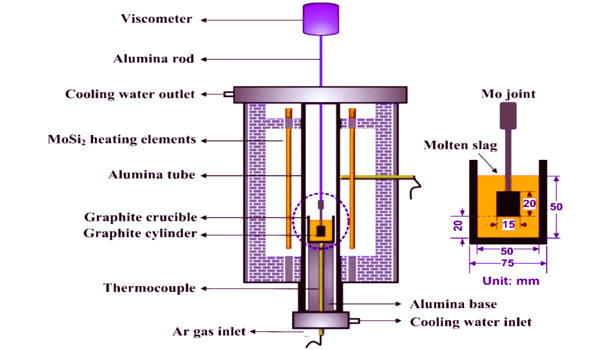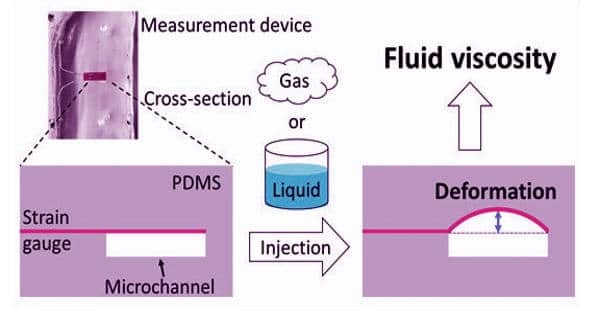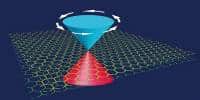NIMS and Harvard University collaborated to develop a technique that can measure the viscosity of both liquids and gases with the same device. This device can identify unknown fluids based on their viscosities and may be used to analyze biological fluids (e.g., breath and blood) for health monitoring and medical checkups. In basic research, the device can also be used to investigate the physical properties and phase transitions of liquid/gas mixtures.
The viscosity of liquids varies, and we notice the difference in our daily lives. Honey, for example, has a high viscosity while water has a low viscosity. However, viscosity is not the only distinguishing feature of liquids; viscosity also exists in gases. Because every fluid, including liquids and gases, has an inherent viscosity, techniques for measuring it are critical for the scientific community and industry.
This device can be used to identify unknown fluids based on their viscosities and may potentially be used to analyze biological fluids (e.g., breath and blood) for health monitoring and medical checkups.
The viscosity of a substance is its resistance to flow, for example, it is a measure of a fluid’s resistance to deformation under shear stress. The viscosity is classified into two types: kinematic viscosity and dynamic viscosity. The dynamic viscosity, also known as absolute viscosity, is calculated by dividing the shear stress by the rate of shear strain. The kinematic viscosity of a fluid is a measurement of the rate at which momentum is transferred through it. It can be calculated by dividing the dynamic viscosity by the density of the substance.
Different types of viscometers are already commercially available and are commonly used to measure liquid viscosity, while techniques for measuring gaseous viscosity are still being researched. As a result, no method exists for measuring the viscosity of both liquids and gases—two fundamentally different fluid phases. In recent years, there has been increased interest in the development of compact and simple technologies capable of measuring and identifying both liquids and gases, such as wearable blood pressure meters and portable odor sensors. As a result, it is preferable to develop a new viscosity measurement technique that is compatible with a broader range of fluids.

This research group recently created a device out of the soft material polydimethylsiloxane (PDMS) with an internal cavity (the microchannel in the figure) into which a fluid sample can be injected. Just above and across the microchannel, a commercially available strain gage was embedded. When an injected fluid passes through the microchannel, it deforms, and the strain gage detects this deformation. For both liquids and gases, the team discovered that the extent of deformation correlates with the viscosity of the injected fluid. Using this correlative relationship, this simple device can accurately measure the viscosity of any fluid in real-time.
In the future, we intend to measure the viscosity of various biological fluids (e.g., human breath and other biological gasses, saliva, urine, and blood) to assess the device’s suitability for analyzing and identifying them. This device could be used for health monitoring and medical checkups, as we envision. Furthermore, we are considering a basic research application for this device; it could be used to measure the viscosity of fluids even during phase transitions from gas to liquid and vice versa, as well as the viscosity of liquid/gas two phases in a variety of forms such as bubble flow, slug flow, annular flow, and so on.
Reliable measurement techniques are thus required in both academia and industry for the rational description and design of multiphase reactors. Different types of measurements are required depending on the goal of the analysis, and it is critical to maintaining the adequacy of space and time resolution of the technique used and the purpose of the study.
A research team led by Kota Shiba (Open in a new window) (Senior Researcher, Olfactory Sensors Group, Research Center for Functional Materials, NIMS) and David A. Weitz worked on this project (Professor, Harvard University). The Fostering Joint International Research (B) category of the JSPS Grant-in-Aid for Scientific Research, a long-term overseas research fund from the Telecommunications Advancement Foundation, and an exchange research grant from the Marubun Research Promotion Foundation all provided funding for this work.












